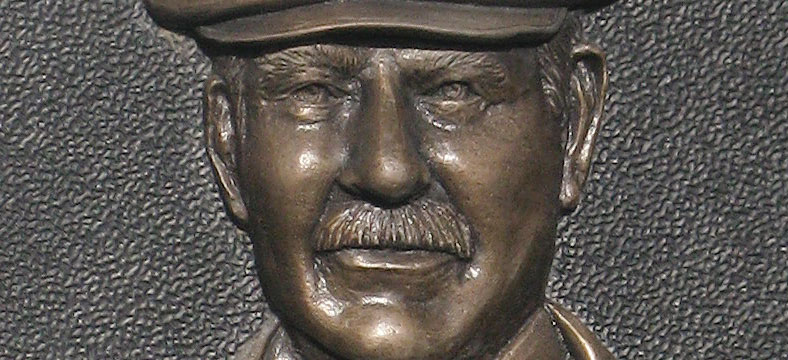
Background
Originally a surgeon in England Alister MacKenzie served in the Boer War and World War I developing camouflage techniques for trenching and bunkering, discovering new ways to manipulate depth perception and create optical illusions in the battlefield landscape. MacKenzie emigrated to the U.S. in the early 1920’s where he plied his knowledge in the realm of golf course architecture and design.
(1870-1934)
Born: Yorkshire, England
Died: Santa Cruz, Calif.
Strengths
Gorgeous, flowing, nearly biblical golf courses that always require thought, positioning, and a proper dose of luck. Each course has more to say about the environment it is set in than the architect who designed it. He was not captive to any nostalgic style or notion. Designs appear hand-crafted, revealing the essence of the site. He practiced before the era of bulldozers, which left him little capacity to force golf holes where they didn’t belong. MacKenzie completely understood the role of risk and reward in the placement of hazards, which many modern designers still don’t seem to grasp. MacKenzie had an uncanny knack for rhythmically combining modest golf holes with more heroic challenges, always allowing room for the lesser player to enjoy the game.
Weaknesses
Not many. His globe-trotting left him only a couple days at a few sites, so some courses have awkward routings or were never fully realized. He was known as iconoclastic, vitriolic, strong-headed, and a general pain in the neck — but so was Picasso.
Quote
When asked how he got his greens to be so undulating, said he told the contractor to “simply employ the biggest fool in the village and tell him to make all the greens flat.”
The Skinny
Many of Dr. Mackenzie’s courses are the cathedrals of the game. Routinely 10 of his courses are rated in the top 100 in the world by the major golf magazines. His approach to providing fair and strategic golf without disrupting the site is a model for golf course design that lasts to this day. He employed strategy without the blinking road signs one sees on new courses today. Recently, some architects have tried to copy his braided bunker edges and have yet to live up to MacKenzie’s example.
Book Your Tee Time Online
Or call us at 916-808-2525
Some of His Best Work
Cypress Point Club, Monterey Peninsula, California (1928)
A very private museum containing 18 of the most beautiful, well-crafted, interesting golf holes on our planet. Having the most photogenic hole in golf (#16) doesn’t hurt.
 Augusta National GC, Augusta, Georgia (1933)
Augusta National GC, Augusta, Georgia (1933)
One of the first true American golf courses. With Bobby Jones hitting test shots at his side, he created the perfect puzzle for the masters of the game. Notice that younger players virtually never win the Masters.
Royal Melbourne GC, Australia (West Course 1931)
The best course south of the equator.
Blairgowie GC, Perthshire, Scotland (Rosemont Course 1927)
One of Scotland’s top-ranked courses. An inland parkland layout cut out of dense forests and moorlands.
Lahinch GC, Ireland (Old Course 1927)
Dr. Mackenzie reworked the Old Tom Morris 1892 layout on an incredible oceanside site. Left in a blind par-3 just for history’s sake. Be careful on the 18th tee; you have to hit over the #5 and #6 fairways before reaching the 18th fairway.
Pasatiempo GC, Santa Cruz, California (1929)
Lovely, difficult test of golf, perfectly blended into the northern California coastal forest.
Valley Club of Montecito, California (1928)
A gem that you or I will never play, unless you know one of the 100 members pretty well (in which case, e-mail me immediately).
Ohio State University Course, Columbus, Ohio (Scarlet Course 1939)
Many great touring pros have played this very fine course, as it has hosted the NCAA championships eight times.
Crystal Downs CC, Michigan (1933)
Brought golf to northern Michigan. Typical severe greens with views of Lake Michigan.
Book Your Tee Time Online
Or call us at 916-808-2525
